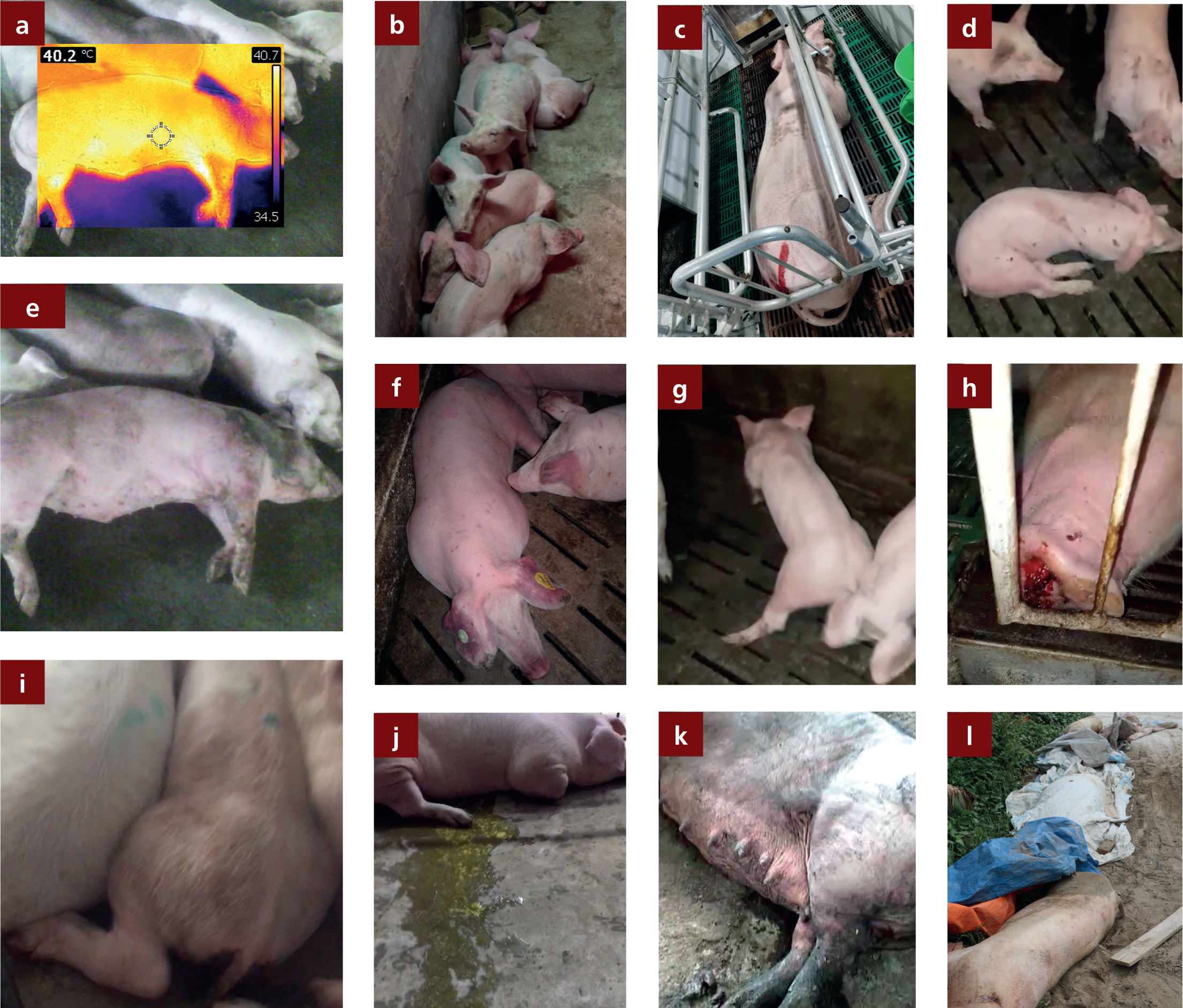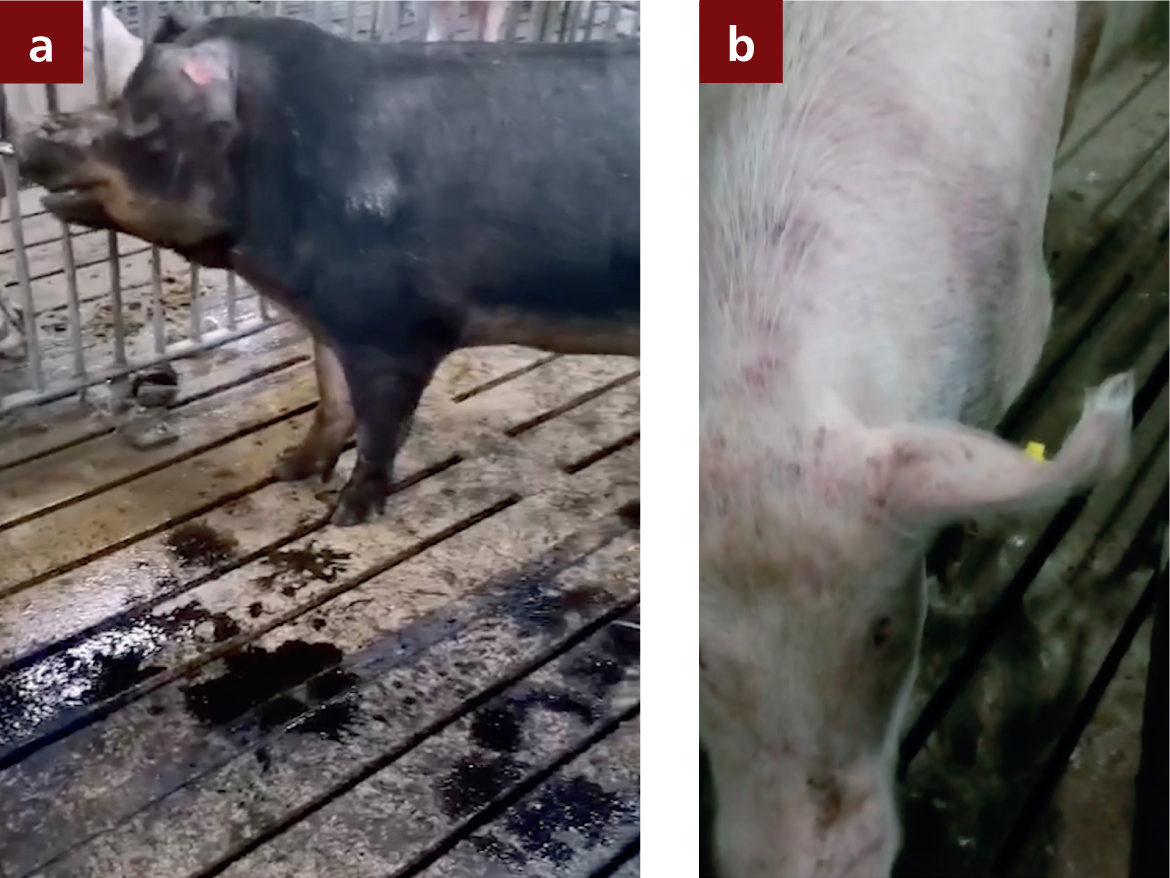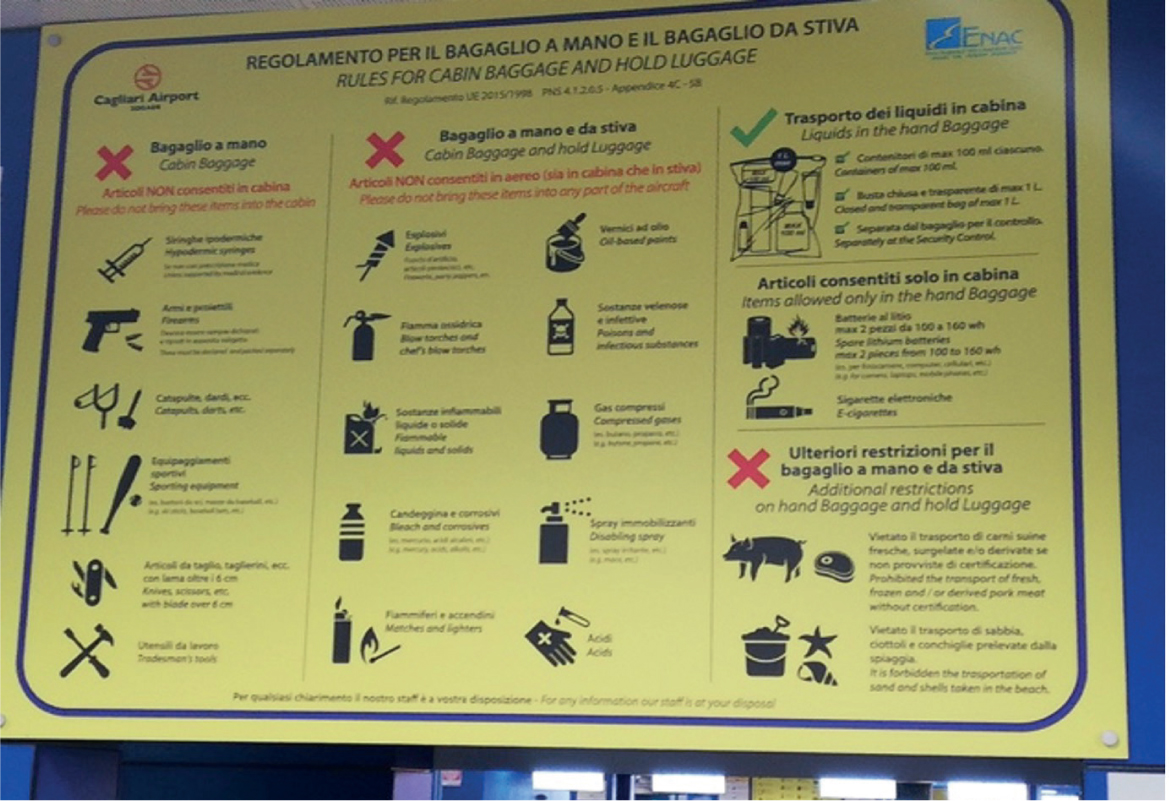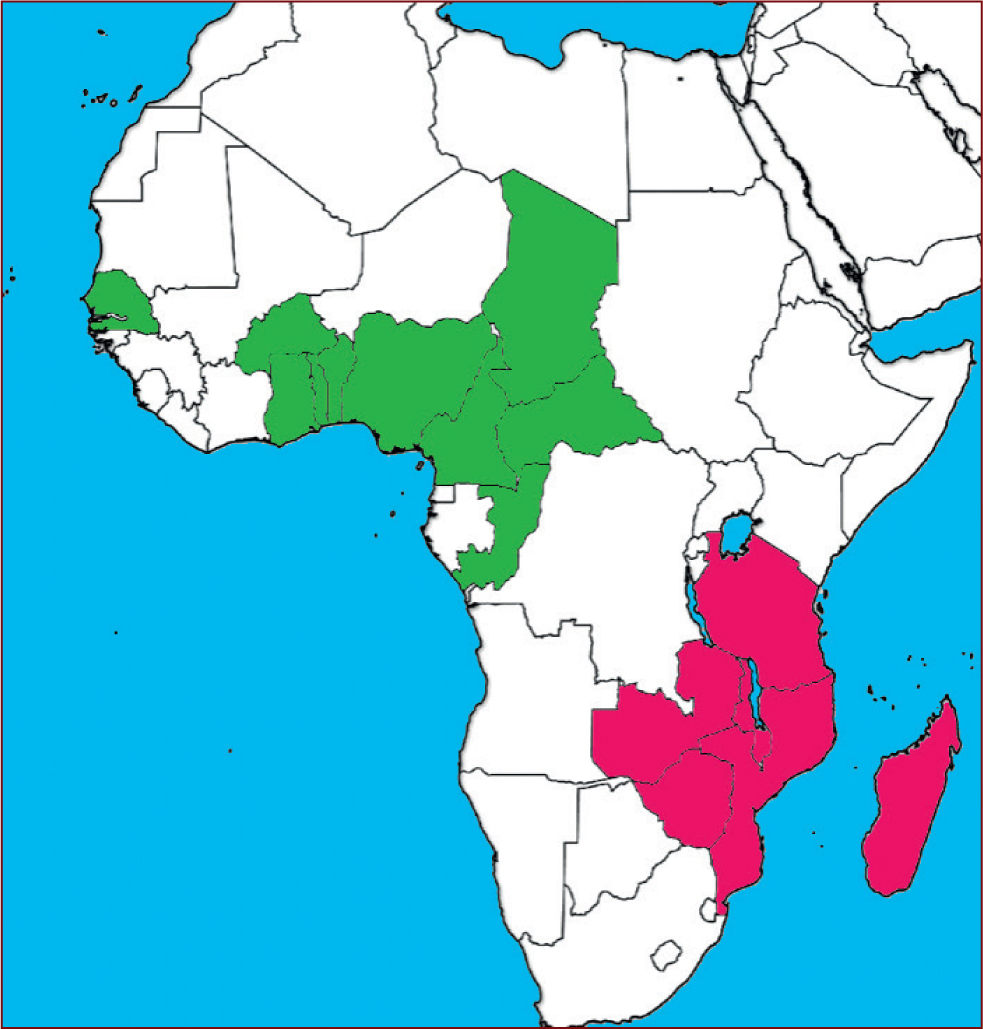There are 24 different variants of Africa swine fever (ASF) virus. As an enveloped DNA virus ASF virus mutates slowly. The fact there are 24 different variants indicates that this virus is very old. The virus is the only member of the Astroviridae family.
The virus affects ticks of the arthropods genus Ornithodoros (soft body tick) and the mammalian Suidae family. The closely related Tayassuidae (peccaries in South America) are not susceptible to ASF (Martin, 2022). No other mammals are affected by this virus. However, while other animals are not infected, they may (including man) act as fomites, and ASF has been found on the feet of flies but not inside the intestines of Musca domestica (house fly) (Carr, personal observation). Fomites can be very important in the epidemiology of the virus spread.
African swine fever virus type 2
From Georgia 2007 to Thailand 2022, Greece 2022 and the Dominican Republic 2021, the same virus strain and sequence is recognised as ASF type 2 with minimal change to the virus. There have been no changes to the clinical signs, virulence or disinfection features of this virus strain.
The spread of the virus has been primarily driven by human actions with very local spread by pigs in neighbourhoods (Carr, personal opinion). This pig driven progressive spread, can encompass entire countries, as is progressively happening in the South Korean wild pig population. The large distances moved by people and hunters are largely responsibile for this spread.
The clinical signs of ASF (all strains) are now well recognised by farm health teams around the world (Carr et al, 2018).
These features and the images shown in Figure 1 are all from ASF type 2:
- High fever up to 42–43°C
- May see grouping/piling of pigs because of difficulty of thermoregulation
- Decreased appetite
- Weakness, incoordination and paddling
- Red, blotchy skin or skin lesions
- Red ears, blue tipped and may be necrotic
- Discharge from nose and corner of eyes
- Discharge may be bloody
- Diarrhoea
- Vomiting
- Coughing and difficulty breathing
- Abortion often on a massive scale and sow death
- Death, which may be quite sudden
- Antigen (polymerase chain reaction (PCR)) positive and antibody (enzyme-linked immunosorbent assay (ELISA)) negative in naïve herds — there are clinical signs and the animal's die before they had time to create antibodies (Figure 1).

A range of ASF variants are known as laboratory constructs
The current ambition is to make a global ASF vaccine. Gene deletion experiments have been tried on ASF type 2, however, while there are many candidates in the genome for deletion, all attempts have so far failed to produce a suitable vaccine (Borca, 2021). A major handicap has been that the vaccine candidate is still alive and is still virulent. No suitable dead vaccine has been discovered.
There are a range of these experimental variants: (Borca, 2021)
- Deletions of genes (or gene areas multigene focus (MGF)) associated with virulence would include: 9GL; NL; UK; MGF (MGF 360/505); DP148R; TK; CD2; I177L; L7L-L11L and MGF9L
- Deletions of genes associated with the attenuation would include: 9GL; NL; UK; MGF; DP148R; I177L,; L7L-L11L and MGF9L
- A I177L gene deleted vaccine candicate has just passed initial safety tests (USDA 2022).
Some of these genes are found in all 24 strains of ASF, but their impacts on each strain may vary. The immunity offered from one strain to another strain may be poor or none at all. Some of these gene deletions allow a vaccine strain to confirm immunity to other strains. Some of the gene deletions have been patented, and this will no doubt continue. While at present none of these candidates are proven to be safe, potent or effective, veterinarians interested in ASF need to monitor the development of these vaccines.
Where are the various ASF variants in the general pig population?
Variants to ASF type 2 are reported in China (Patton, 2021). But it is known that Vietnam and Philippines are doing trials on vaccine strains.
The authors' experience is with an outbreak in China associated with an ASF variant with both CD2v and MGC360 gene deleted areas (Carr, personal 2022).
Clinical signs associated with ASF type 2 variant CD2v MGF360 are (Figure 2):
- No fever — clinically sick animals may be non-pyrexic or only mildly pyrexic up to 40°C
- No real clinical signs in PCR positive animals
- Decreased appetite in 20% of the clinically affected animals
- Weakness, incoordination and paddling in a few individuals
- Red, blotchy skin or skin lesions in 40% of clinically affected animals
- Diarrhoea possibly with blood
- Vomiting with blood
- Coughing and difficulty breathing
- Abortion occasionally and the sows that abort may live
- Death in around 10% of animals. Death is generally not sudden. Morbidity can still be close to 100%
- Antigen (PCR) positive and antibody (ELISA) positive in naïve herds breaking, indicating the virus has been on the farm for more than 14 days and animals are living long enough to create an antibody response.

African swine fever type 1
In 1950 to 1990 an outbreak of ASF type 1 left Africa, and the remnants of this outbreak from 1978 continues in Sardinia today (EC 2021). This outbreak affects the wild pigs of Sardinia, and the few commercial farms are now affected. There are renewed efforts to complete the eradication programme. Interestingly Sardinia bars people from taking pork out because of this ASF type (Figure 3).

Unfortunately, two remnants of this 1950s outbreak from Portugal found its way into China (Sun et al, 2021), and are adding to the mix of ASF virus variants circulating in China, but not reported, yet, in other parts of Southeast Asia. These two types are referred to as T NH/P68 (for Chinese HeN/ZZ-P1/21) and OURT88/3 (and for Chinese type SD/DY-I/21.
Sun et al (2021) suggested that the ASF type 1 virus emerged, but this is not likely. It is much more likely that the virus was brought to China by humans from a laboratory attenuated strain from the late 1960s (Figure 4). With 24 different ASF strains there is limited cross-protection, and in order to ensure a vaccine is effective, it must be derived from the current outbreak strain (Borca et al, 2020).

Clinical signs
Clinical signs of ASF type 1 include weight loss, intermittent fever, which may be high pyrexia, skin ulcers, red blotching of the skin, arthritis, swollen joints and sporadic deaths (Sun et al, 2021).
Where are these two strains of African swine fever in Africa?
All 24 strains of ASF are found in Africa; however, concentrating on the two strains that are currently also causing infections outside Africa reveals that type 2 is currently found in Eastern Subsaraha Africa, while type 1 is commonly found in West Central Africa (Njau et al, 2021), as illustrated in Figure 5.

Conclusion
ASF continues to ravage the global pig industry and areas that are free must maintain their national biosecurity measures to keep the pathogen out of the area. In areas infected, individual farms must maintain perimeter fence biosecurity to prevent wild feral pigs from gaining any access to the farm.
With the severity of the disease resulting in mass mortality the development of vaccines is essential. Development projects have been attempted for over 40 years. Gene-deleted vaccine technology can offer new opportunities, but premature release of vaccines may not offer the solution to the problem and may only increase the clinical confusion. In many parts of the world a reduction in mortality may be considered an option by the local industry.
KEY POINTS
- African swine fever is a major threat to the global pig industry.
- Vaccines have had limited success or application over the last 40 days of development.
- Only live vaccines seem to have any benefit.
- Gene-deleted vaccines are being developed.
- The premature release of vaccine candidates can create clinical confusion.


